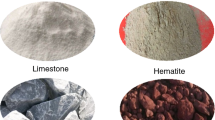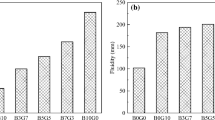Abstract
Objective
This study aims to improve the coagulation time, strength, and construction cost of magnesium phosphate cement.
Methods
We analyzed the microstructure changes in the hardened magnesium phosphate cement paste through qualitative analysis, quantitative test, microscopic examination, and research regarding adding different concentrations of acetic acid on magnesium phosphate cement slurry time, effects of flow resistance, and mechanical properties.
Results
When a moderate amount of AA was used, the setting time of MAPC mortar was significantly prolonged but was later reduced as the concentration increased. In the early phase, the degree of MAPC mortar hydration increased, whereas compressive strength significantly increased initially and increased slowly in the later phase. The crystal morphology and size of MAPC hydrates changed, and hardened MAPC became more compact in structure. The AA absorbed some ammonia in the MAPC condensation.
Conclusion
Acetic acid can effectively regulate coagulation time, induce early hydration reaction rate, and improve the performance of magnesium phosphate cement, which can reduce the construction cost of magnesium phosphate cement.
Similar content being viewed by others
References
Del Valle-Zermeno, R., Aubert, J. E., and Laborel-Preneron, A. (2015). “Preliminary study of the mechanical and hygrothermal properties of hemp-magnesium phosphate cements.” Construction and Building Materials, Vol. 105, pp. 62–68, DOI: 10.1016/j.conbuildmat.2015. 12.081.
Ding, Z., Dong, B. Q., Xing, F., and Han, N. X. (2012). “Cementing mechanism of potassium phosphate based magnesium phosphate cement.” Ceramics International, Vol. 38, No. 8, pp. 6281–6288, DOI: 10.1016/j.ceramint.2012.04.083.
Lu, Z. Y., Hou, D. S., and Ma, H. Y. (2016). “Effects of graphene oxide on the properties and microstructures of the magnesium potassium phosphate cement paste.” Construction and Building Materials, Vol. 119, pp. 107–112, DOI: 10.1016/j.conbuildmat.2016. 05.060.
Patrick, K. D. and Matthew, D. A. (2010). “Durable phosphate-bonded natural fiber composite products.” Construction and Building Materials, Vol. 24, pp. 215–219, DOI: 10.1016/j.conbuildmat.2007.05.15.
Q, Z. B. and Wu, X. (2000). “Characteristics and durability test of magnesium phosphate cement-based material for rapid repair of concrete.” Materials and Structures, Vol. 33, pp. 229–234, DOI: 10.1007/BF02479332.
Qiao, Fei, Chau, C. K., and Li, Z. J. (2012). “Calorimetric study of mannesium potassium phosphate cement.” Materials and Structures, Vol. 45, pp. 447–456, DOI: 10.1617/s11527-011-9776-z.
Seehra, S. S., Gupta, S., and Kummar, S. (1993). “Rapid setting magnesium phosphate cement for quick repair of concrete pavements-Characterization and durability aspects.” Cement and Concrete Research, Vol. 23, pp. 254–266, DOI: 10.1016/0008-8846(93)90090-V.
Wagh, A. S. (2004). “Chemically bonded phosphateceramic.” Oxford: Elsevier Science Ltd, pp. 173–175, DOI: 10.1111/j.1151-2916.2003.tb03571.x.
Xing, F., Ding, Z., and Li, Z. J. (2011). “Effect of additives on properties of magnesium phosphosilicate cement.” Adaancse in Cement Research, Vol. 23, pp. 69–74, DOI: 10.1680/adcr.9.00019.
Yang, Q. and Wu, X. (1999). “Faftors influencing properties of phosphate cement-based blinder for rapid repair of concrete.” Cement and Concrete Research, Vol. 29, pp. 389–396, DOI: 10.1016/S0008-8846(98)00230-0.
Yu, B. Y., Chen, Z. Q., and Yu, L. L. (2016). “Water-resisting ability of cemented broken rocks.” International Journal of Mining Science and Technology, Vol. 26, pp. 449–454, DOI: 10.1016/S0263-7863 (16)00060-X.
Author information
Authors and Affiliations
Corresponding author
Rights and permissions
About this article
Cite this article
Li, J., Ji, Ys., Huang, Gd. et al. Properties and reaction mechanisms of magnesium phosphate cement mixed with acetic acid. KSCE J Civ Eng 22, 231–235 (2018). https://doi.org/10.1007/s12205-017-1408-x
Received:
Accepted:
Published:
Issue Date:
DOI: https://doi.org/10.1007/s12205-017-1408-x




